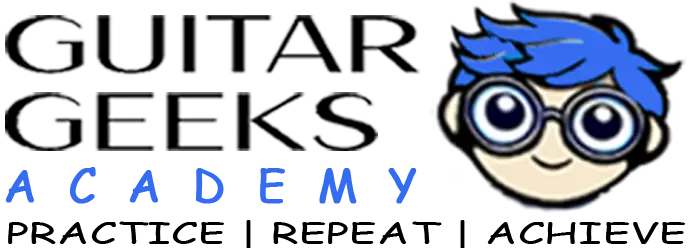Introduction
Setting tempo goals is a crucial aspect of your guitar practice journey. Whether you’re working on scales, chord transitions, licks, or song performance, having clear tempo goals can help you track progress and achieve your musical aspirations. Below, we’ve provided guidance on how to set and customize tempo goals for different scenarios and skill levels.
Scenario 1: Speed for a Scale
- Tempo Goal: Decide on the tempo you want to achieve when playing a specific scale. This goal can help you increase your speed and agility on the fretboard.
- Current Tempo: Assess your current ability by determining the tempo at which you can comfortably play the scale.
- Tempo Goal Date: Set a reasonable date by which you aim to reach your desired tempo. It could be one month or more, depending on your starting point and goals.
Example:
- Tempo Goal: Increase the speed of playing the minor pentatonic scale.
- Current Tempo: Currently playing the scale comfortably at 55 BPM.
- Tempo Goal Date: Aim to reach 85 BPM in one month.
Scenario 2: Song Using a Chord Transition
- Tempo Goal: Define a tempo goal based on the speed required for a specific song that involves chord transitions.
- Current Tempo: Determine your current transition speed for the chords involved in the song.
- Tempo Goal Date: Set a date by which you plan to match the song’s tempo. This could be within a few weeks to ensure you can play the song seamlessly.
Example:
- Tempo Goal: Improve chord transitions between C and G for a specific song.
- Current Tempo: Currently transitioning smoothly at 50 BPM.
- Tempo Goal Date: Plan to achieve 90 BPM within two weeks for the song’s tempo.
Scenario 3: Guitar Lick
- Tempo Goal: Set a tempo goal for mastering a specific guitar lick, which can be part of a solo or melody.
- Current Tempo: Determine the tempo at which you can accurately play the lick.
- Tempo Goal Date: Establish a timeline for reaching your desired tempo, ensuring you gain precision and speed.
Example:
- Tempo Goal: Master a 2-bar guitar lick in the major scale.
- Current Tempo: Playing the lick accurately at 80 BPM.
- Tempo Goal Date: Push to reach 135 BPM within three weeks for precision and speed.
Scenario 4: Barre Chord Transition
- Tempo Goal: Focus on improving the speed of transitioning between barre chords and open chords.
- Current Tempo: Assess your current transition speed for these chords.
- Tempo Goal Date: Set a date to reach your desired tempo, making it easier to play the chord progression smoothly.
Example:
- Tempo Goal: Enhance the speed of transitioning between an F barre chord and an open C chord.
- Current Tempo: Comfortably transitioning at 45 BPM.
- Tempo Goal Date: Strive to reach 80 BPM in one month to play the chord progression effortlessly.
Scenario 5: Scale Sequence Mastery
- Tempo Goal: Determine the tempo at which you aim to play a specific scale sequence accurately.
- Current Tempo: Assess your current proficiency by identifying the tempo at which you can play the sequence comfortably.
- Tempo Goal Date: Set a target date to reach your desired tempo, considering your starting point and practice schedule.
Example:
- Tempo Goal: Master a minor scale sequence.
- Current Tempo: Currently playing the sequence comfortably at 90 BPM.
- Tempo Goal Date: Aim to reach 110 BPM in three weeks for improved speed and precision.
Scenario 6: Guitar Technique Mastery
- Tempo Goal: Define a tempo goal for mastering a specific guitar technique, such as alternate picking or hammer-ons.
- Current Tempo: Determine the tempo at which you can accurately perform the technique.
- Tempo Goal Date: Establish a timeline for reaching your desired tempo, ensuring you gain precision and speed in executing the technique.
Example:
- Tempo Goal: Master alternate picking technique.
- Current Tempo: Currently executing alternate picking accurately at 100 BPM.
- Tempo Goal Date: Push to reach 120 BPM within three weeks for increased precision and speed.
Conclusion
Setting tempo goals tailored to your specific practice scenarios is a key step in your guitar learning journey. Remember that your starting tempo should match your current proficiency level, and gradual progress is more effective than rushing. With well-defined tempo goals, you can track your development, stay motivated, and continuously improve your guitar skills.
Happy practicing, and enjoy your musical journey!

